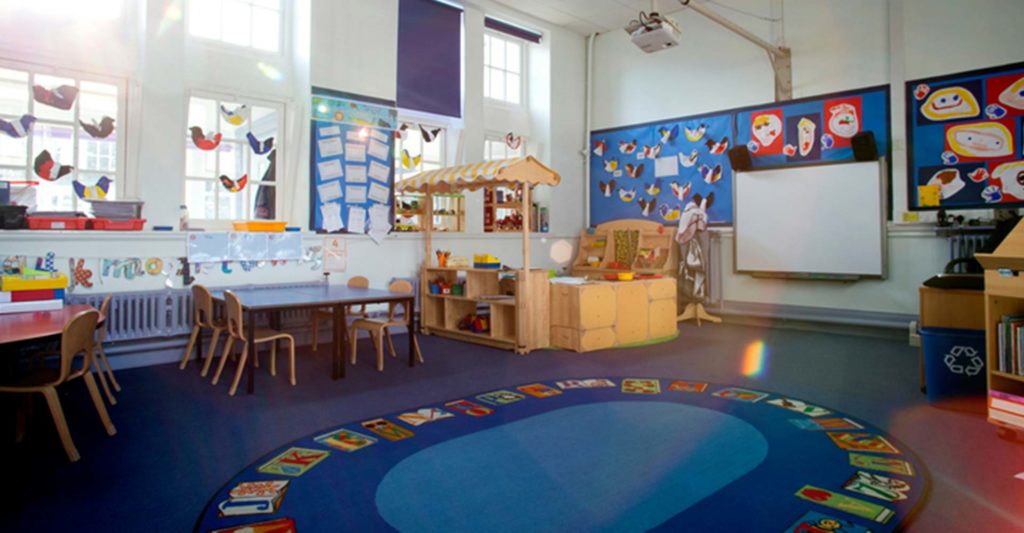
The child care affordability crisis in the United States has persisted for decades.
To understand how we got here, we might look back to the Comprehensive Child Development Bill of 1972. If the bill had passed, it would have pushed billions of dollars into the creation of a nationally-funded child care system, making child care services more affordable for millions of Americans and encouraging their parents to enter or return to the workforce.
However, after the bill passed both congressional and senate voting, it was vetoed by President Nixon – the United States would have no universal child care program for its families.
Fast-forwarding to today, we can see the results of this decision: many working-class and low-income families are unable to afford quality child care for their children.
In 2016, the United States Department of Health and Human Services established an affordability standard for child care: that affordable child care should cost no more than seven percent of a family’s income. However, as of today, there are zero states where child care costs meet this standard. Even in Mississippi, the state with the lowest average child care costs, annual infant care costs families an average of $5,760 annually – 7.6 percent of the median income in the state.
Meanwhile, in California, families pay an average of $16,452 annually for infant care, amounting to more than 22 percent of median family income – and if that’s how child care affordability looks for the median family, you can imagine the dire situations faced by low-income families and single parents who depend on child care services so they can go to work.
Then COVID-19 happened, and things got even worse. The existing child care affordability crisis morphed into a child care affordability and availability crisis, as centers across the nation closed their doors to comply with orders from state regulators to limit the spread of infection.
Now, as centers are beginning to reopen, many are understandably raising their enrollment fees to cover new expenses, including personal protective equipment, disinfectant and additional cleaning supplies. While this is necessary from a business perspective, it makes it even more challenging for parents searching for child care services that are safe, affordable and valuable for their kids.
This is the COVID-19 child care crisis, a set of circumstances that has exposed and exacerbated existing weaknesses in America’s child care system.
The past few months have taught us major lessons about the importance of child care services to the economy and the overall health of our country. As we look back, we wanted to share our three biggest take-aways from the COVID-19 child care crisis and how a lack of affordable and accessible child care services can have an impact on parents, families and our society.
Work & Life Balance is Impossible without Child Care
Without affordable and accessible child care centers, it is simply impossible for parents to find a reasonable balance between caring for their families and developing their professional lives.
This observation is not a new one, but it has never been more obvious than during the last several months where we have seen hundreds of thousands of parents struggling to accomplish their professional goals while working from home with kids.
And the reason why is simple: raising an infant or a toddler is a full-time job, and with roughly 70 percent of men and 60 percent of women participating in the labor force, families depend on child care workers to alleviate them from child care duties for eight to ten hours a day.
In addition to fulfilling their job roles, parents may also use this time to exercise, pursue a hobby, or socialize with other adults – all activities that contribute to a healthy work/life balance.
But when child care centers are closed, all those activities fall by the wayside as parents shift their focus to meeting the needs of their kids throughout the day. Children under five demand a lot of attention, leaving parents with minimal time to devote to self-care and personal development. When parents need to do focused work, interruptions from kids at home are constant and research reinforces the need to respond to young children if not immediately, then as soon as possible.
Lack of Child Care Limits Working Women
When child care services are unavailable, the most common result is that women stay home and care for children, putting their careers on hold or sacrificing them altogether.
Journalists at the Center for American Progress completed an in-depth study attempting to quantify the impact of interrupting a career to care for a child. The results were predictably dire: when a woman leaves her job to care for her infant child, each year she spends out of work can cost her more than 3x her salary in lifetime earnings, including lost potential for career growth, loss of benefits and decreased retirement savings.
Still, when faced with a lack of affordable child care services, many women choose to leave the work force and care for their kids – because in the short term, there may not be much choice.
Consider the median family in California, which would have earned just over $75,000 in 2018. For easy numbers, let us imagine that both parents earn the same salary – $37,500.
Infant care in California costs $16,452, so a family with one child might very well choose to place that child in a center-based infant care program – but what about one with a second child? As the total cost of child care reaches $32,904, parents notice that half of their household income is being spent on child care and it starts making sense for someone to stay home with the kids instead of going to work. Often that ends up being the mother.
The family earns less money, but they will also spend less on gas, transportation, and eating out with one parent staying at home – so it seems to balance out. Meanwhile, the women who stay home to become caregivers lose out on the benefits of their hard-earned education in terms of future income and career/life satisfaction.
Affordable and accessible child care services play a huge role in enabling more women to reach their potential in education, in their careers and in life.
Child Care Centers are Critical for Early Learning & Social Development

Life without child care centers is hard on children, who otherwise may miss out on the early learning and social developmental opportunities provided through child care programs.
Despite their best efforts, many parents in the COVID-19 child care crisis are simply not equipped to provide these opportunities while working from home with kids.
Kids need a regular schedule or routine and activities to keep them engaged and help them develop focus. They need structured learning opportunities across the five developmental domains: cognitive, social/emotional, physical, adaptive and communicative. They also need regular human interactions, both with adults and same-age peers.
And while child care centers are designed to provide all these things, and child care workers trained to optimize their impact, parents may lack the specific education, tools or time necessary to guide their child’s development.
The COVID-19 child care crisis has reminded us that child care centers are still the best place to develop kids into happy, healthy and smart adults because they combine the dedication of early childhood educators and the support of parents.
The Way Forward: Advocacy Efforts, More Technology & Larger Margins
What steps can child care centers take to limit the impact of the COVID-19 child care crisis? How can we make child care services more available and more affordable for families? How can we help ensure that more kids get a high-quality early education experience?
Here are two areas we can focus on to shift the meter on child care affordability and make life easier for families:
1. Support Child Care Advocacy – Organizations like Child Care Aware of America and the National Association for the Education of Young Children (NAEYC) are among the loudest voices calling for child care reform, better emergency support for child care centers, and more affordable child care across the United States. Parents, child care providers and child care administrators can connect with these organizations to get involved with advocacy for affordable child care.
2. More Technology and Larger Margins – Child care centers can leverage technology to drive down their operating costs and pass savings on to parents, making child care services more affordable for the community. With Procare Solutions, child care centers can automate and streamline key administrative tasks, ranging from payment processing and financial accounting to staff management and daily observations.



